This week, Pendo hosts 400 product leaders for our annual Pendomonium conference in Raleigh. Today, as we kick off the first day of Pendomonium, we’re announcing exciting new product capabilities, which in combination, form what we’re calling the product cloud.
What’s a Product Cloud?
In today’s press release, Pendo co-founder and CEO, Todd Olson said: “Virtually every role in the enterprise has a purpose-built cloud. Sales, marketing, service, finance and HR all have clouds that, in many cases, have fundamentally changed and often improved how these jobs are done.”
We see the same dynamic happening in product management, where a proliferation of product and customer data informs both the strategic actions we take in prioritization and decision making, and the more operational actions to guide users through the product journey.
At the heart of the product cloud are three foundational capabilities:
- A system of record to capture, manage, analyze, and activate quantitative and qualitative user data.
- Automation to remove manual effort in the execution and sequencing of key functions, for example, to target messages and personalize in-app experiences.
- An open integration hub to easily connect with other parts of the product creation lifecycle, including design, engineering, marketing and customer success tools.

Of course, integration is utterly essential in order to achieve a connected set of workflows within a product organization and across an enterprise. As part of this product cloud vision, Pendo has announced an integration hub as an extensible framework to enable virtually infinite integrations.
Across the product organization, as product leaders look to create connected, data-driven processes as the foundation of the product creation lifecycle:
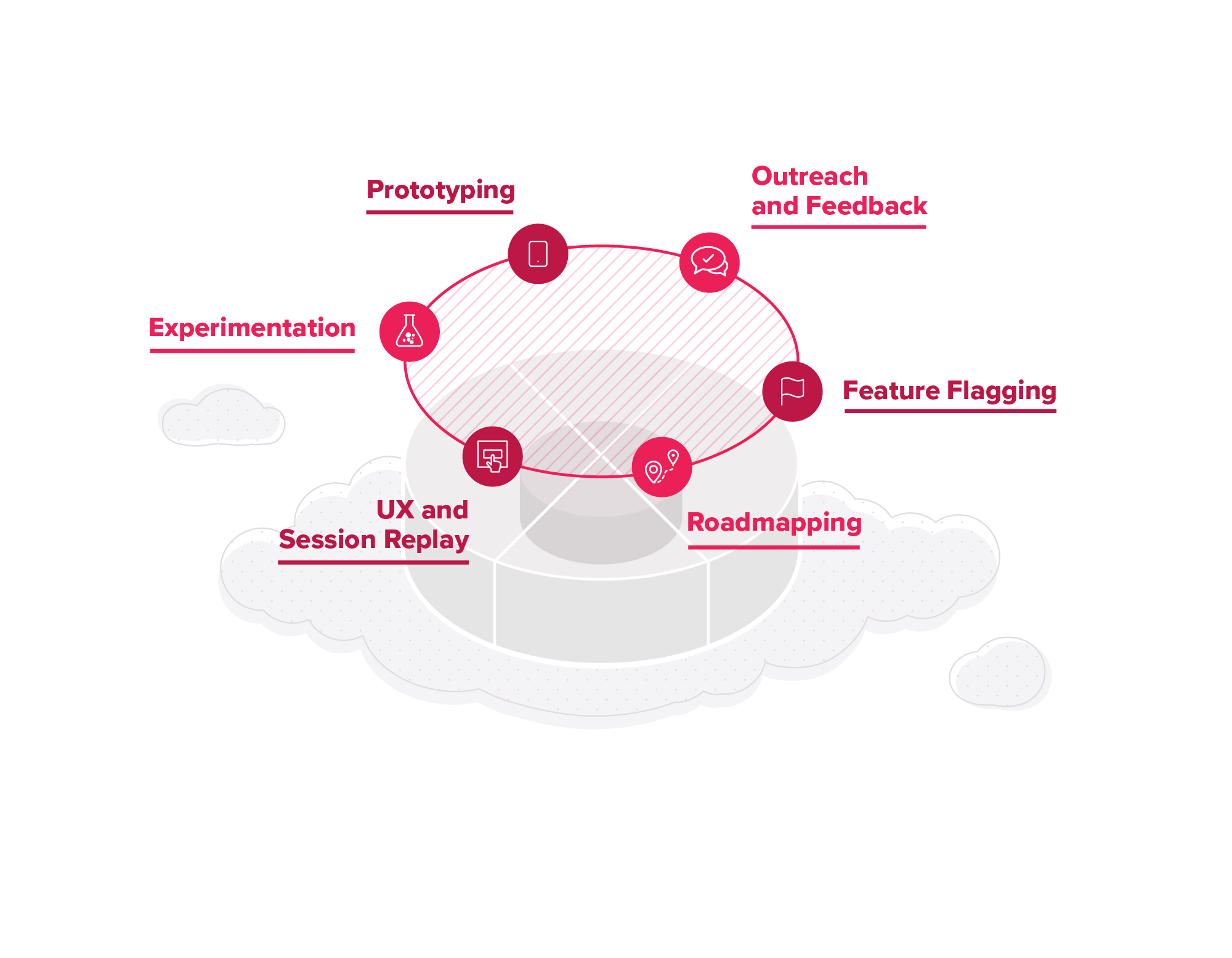
And across the enterprise, as adjacent roles like sales, marketing and customer success look to access rich product data to improve their own workflows and decision making:
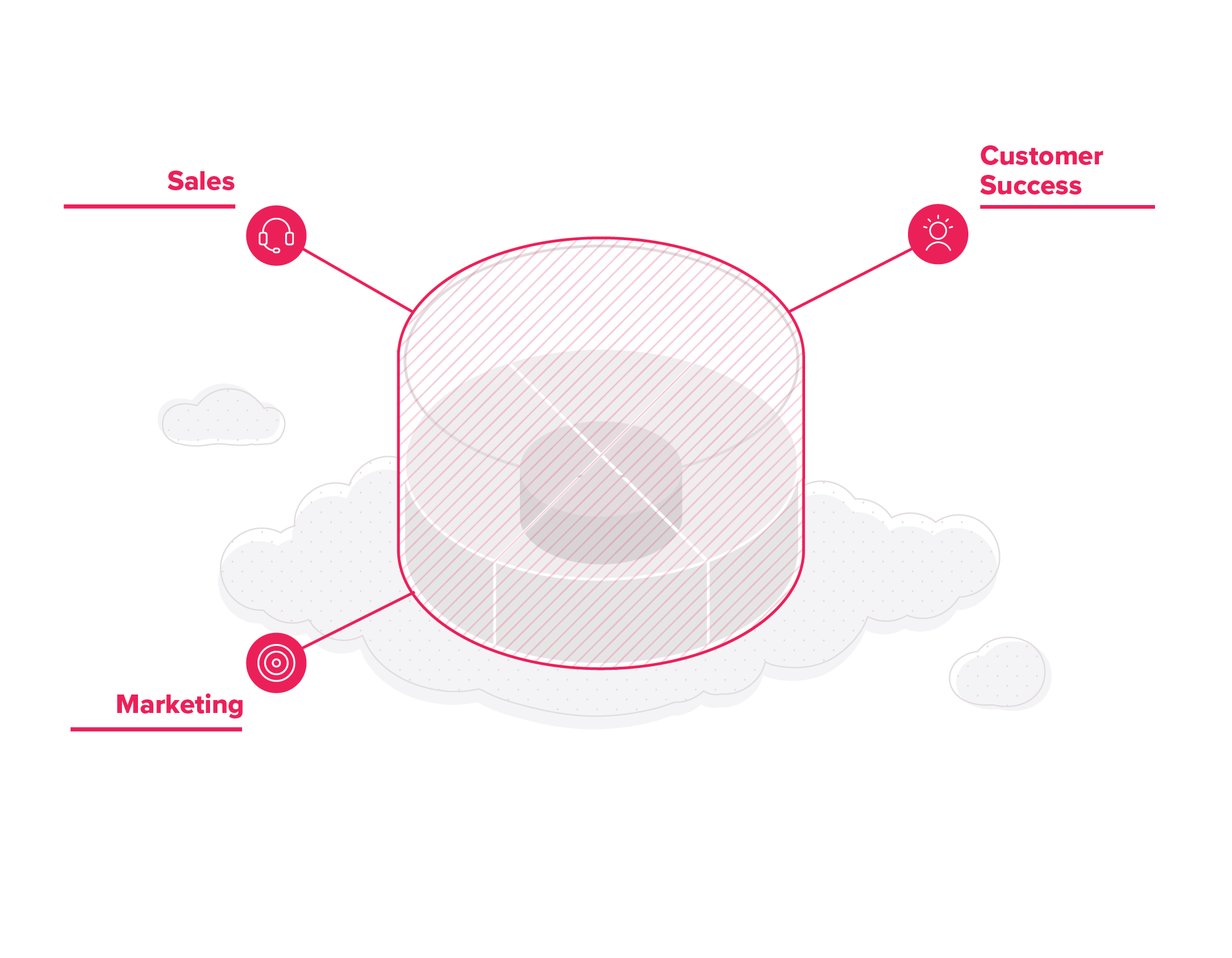
Specific integrations at the time of today’s announcement include:
- Knowledge base tools including Zendesk, Algolia, Help Docks, Help Scout, Swiftype, and WordPress.
- Live chat tools, including Chatra, Drift, Freshchat, Intercom, LiveChat, Olark, Smooch, SnapEngage, UserEngage, Tagove, Talkus and Zendesk.
- These new integrations are complemented by Pendo’s currently supported integrations with Salesforce Sales Cloud, Gainsight, InVision, Segment and Zapier.
For information on Pendo’s integration hub, visit https://www.pendo.io/product/features/integrations/.
In addition, Pendo announced several new analytics themed features .
Goals
Pendo’s Goals allows product teams to benchmark product usage against specific objectives allowing for more actionable insights from product usage data.
Clarifying and codifying measurable goals are what makes data actionable. Goals helps product leaders to track product usage and feature adoption against objectives and easily share progress toward specific KPIs across teams.
Track goals for:
- Specific time frames
- Ongoing adoption
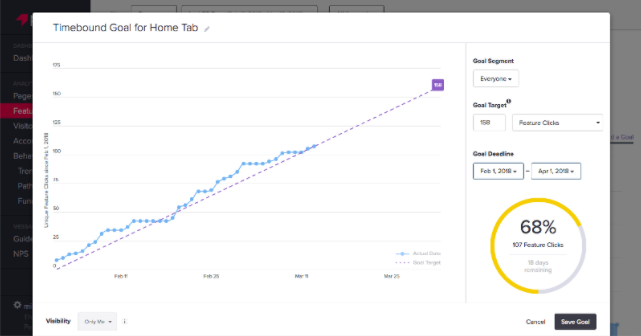
Trends
Pendo’s Trends are a new set of comparative analytics for understanding product usage in greater depth.
Product teams often face the challenge of analyzing complex data, and must do so for multiple features, user segments, and time frames. Trends provides analytics and data visualization enhancements for digging deeper into product insights. The feature makes it easier to see patterns by comparing user segments, features, and pages side-by-side, across multiple time frames.
Dig into product insights across:
- User segments
- Features
- Pages
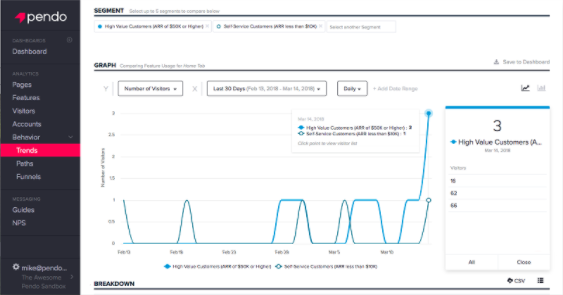
Command Center
Pendo’s new command center features multiple dashboards to create a unified product overview. These new flexible dashboards allow product managers to measure a variety of metrics for different parts of their products and examine high level metrics vs. granular details. You can create customized views into product usage patterns that are aligned to specific product portfolios, KPIs and workflows and have dashboard visibility for different initiatives and user segments.
Pendo’s Command Center allows you to:
- Create up to three dashboards at a time
- Create visibility for different initiatives
- Take direct action for different user segments
Track Events
Track events are custom-defined events for capturing API calls or user behavior that can’t be captured automatically. This allows additional flexibility to capture any user event or API call for deeper visibility into product engagement.
Track events allow you to:
- Track with other Pendo data
- Create goals
- Power user segments
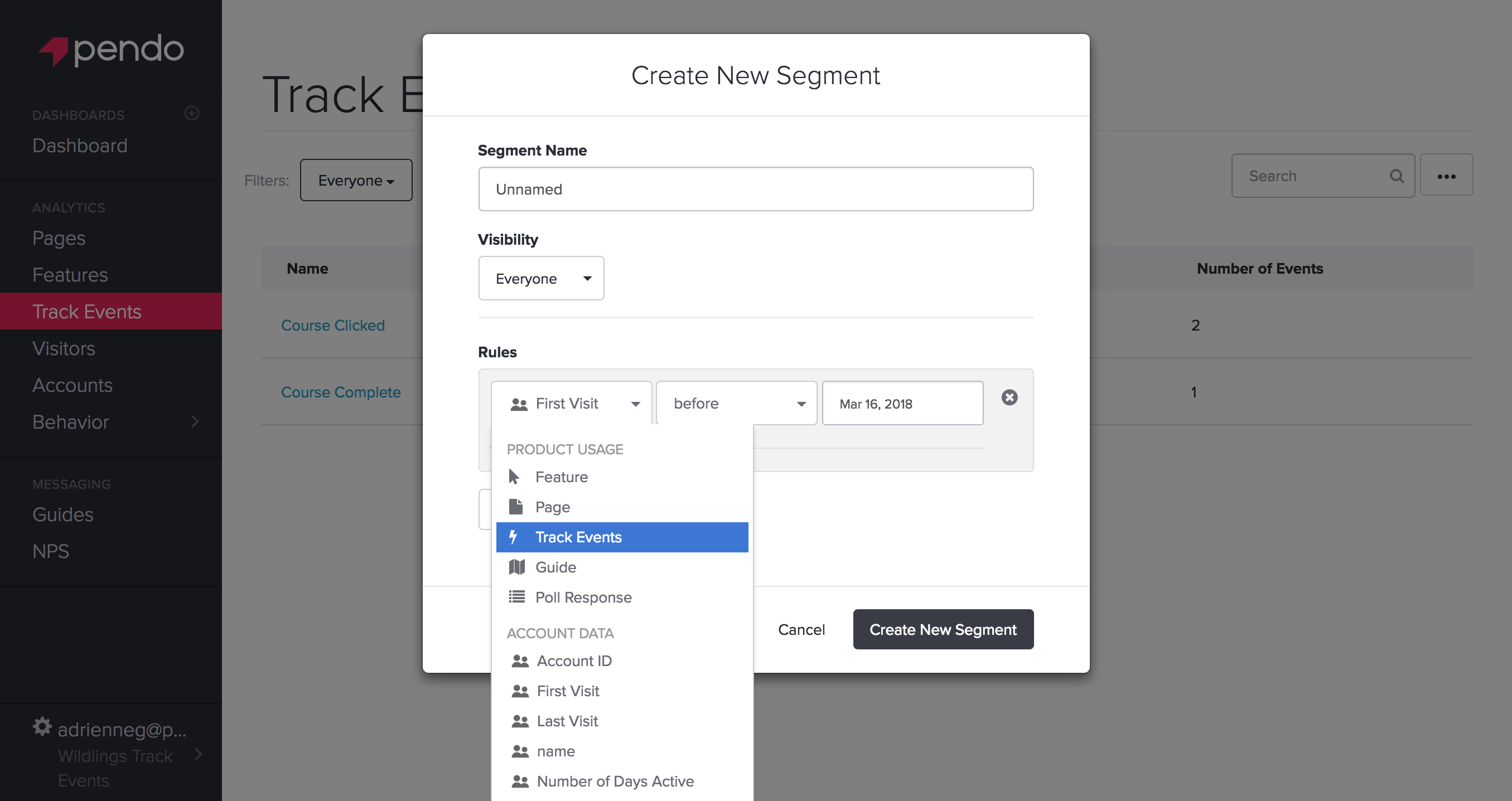
Learn more about the Pendo product cloud here.